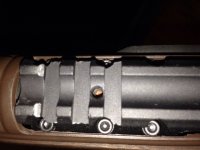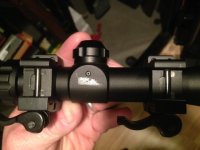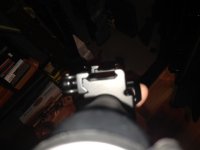You are using an out of date browser. It may not display this or other websites correctly.
You should upgrade or use an alternative browser.
You should upgrade or use an alternative browser.
Picatinney rail peening..
- Thread starter 1stmar
- Start date
Dixie Gunsmithing
Moderator Emeritus
When you say peened, do you mean it's mashing in or damaging the angle on the outer edge?
Dixie Gunsmithing
Moderator Emeritus
How tight was the screws torqued down on the ring bases? If it has deformed it, so it's out of spec, or bent, where another base wont tighten up on it, then you'll probably have to install a new rail. When tightening the scope base screws, use a torque driver, if you can get one, and tighten the screws 40-60 in/lbs. You can get a cheap 1/4" torque wrench from Harbor Freight, as it is not critical for an exact torque on these, just as long as it falls within that range. The torque varies between those numbers by the manufacturers.
Dixie Gunsmithing
Moderator Emeritus
The way its chewed up, it looks like it might be aluminum, and soft at that. They make some aluminum rails that are actually tough, but it's according to what aluminum they use in the extrusion.
Dixie Gunsmithing
Moderator Emeritus
Thanks DG. I was not aware that there were aluminium rails for something like a M-1A.
Gary it may be steel, but something really soft, like 1010 maybe. Most stock rail is an aluminum extrusion that they machine the slots in, and cut it to length. One company sells it in 3 foot sticks.
It seems that whatever that was made from, was soft enough that it was easily deformed.
Gunplummer
New member
Leapers rings are Chinese, I believe. I have used their scopes from time to time because they had the best selection of short tube scopes available. I never used their rings/bases, but they may not be 45 degrees. A lot of the imported rings are some weird angle and it allows the corner of the angle on the ring to contact the base on the point of the base angle instead of the two flats of the angle. Only the two flats of the angle on both the ring and base should be touching. You may have to read this twice to make sense of it. Sorry, it is the best I could do. You older guys may remember when some U.S. companies used 60 degrees on their rings and bases. I had a lot of "Wrong combinations" brought in.
Dixie Gunsmithing
Moderator Emeritus
Those look to be a 90 degree angle. Picatinney rail has two 45 degree angles either side of center, making a 90 degree V.



